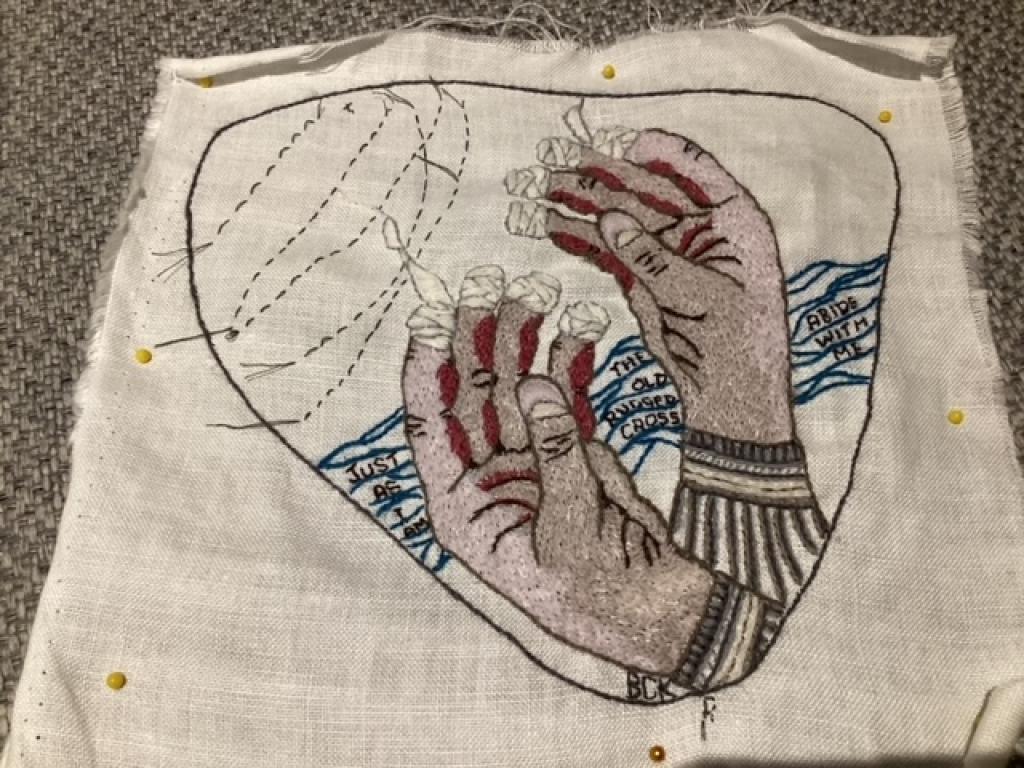
Guttin’ Quines Clootie Fingers
By Helen Wood
 Journey Stone dedicated to the Fisher Lassies of the Highlands
Journey Stone dedicated to the Fisher Lassies of the HighlandsImage provided by Helen Wood
 Guttin' Quines' Journey Stone
Guttin' Quines' Journey StoneImage provided by Helen Wood
My heritage is fishing, following generations on both sides of my parents. It has been a way of life that is both born and bred in you. Living by the sea it is not hard to accept that the sea can be both cruel and bountiful in its nature.
In the past, women were the backbone of this way of living. Whilst men fished out at sea the women shelled mussels, cleaned and cured the fish, baited lines and mended nets. The women would then walk for miles into the countryside with creels, full of fish, on their backs to sell.
The Herring Boom of the late 18th and early 19th centuries engaged thousands of fisher lassies – Guttin' Quines – to gut and pack herring with salt into barrels. My mother was a Guttin’ Quine from the age of 14 years and travelled from Lerwick in Shetland to Yarmouth in the south following the herring fleet.
The Guttin’ Quines worked all hours on the quayside, out in the open, with no shelter, even in winter, until the boat’s catches were all gutted and packed in barrels. They dressed their fingers with cloths (clooties) for protection against the flashing knives and stinging salt. The quines were paid by the barrel and her pay was one shilling (5p) which had to be shared among 3 quines (2 gutted, 1 packed). They lived in huts and slept in bunkbeds on a donkey’s breakfast - “Glad to roll into bed and glad to get out of it!” my Mam used to say.
These women were young girls, wives, mothers and grannies all working tirelessly for a living in an industry that was all they knew.
This embroidery of the ‘Guttin’ Quines’ Clootie Fingers’ is dedicated to Mam and all the Fisher Lassies.
Many thanks to Helen Wood for sharing with us the story behind her journey stone, created as part of the Tapestry of the Highlands and Islands.
WHAT IS A JOURNEY STONE?
Prior to the beginning of the stitching of each tapestry panel, each stitcher of the Tapestry of the Highlands and Islands was tasked with telling their interpretation of the 'Spirit of the Highlands and Islands' within a blank outline of a stone. The possibilities were truly endless - is it represented in the land? The people? A historical site? A favourite memory?
In any case, each journey stone represents the connection between of each individual stitcher, their story, and their own sense, or 'spirit', of place. Discover more of the stories behind the journey stones of the Tapestry of the Highlands and Islands here.